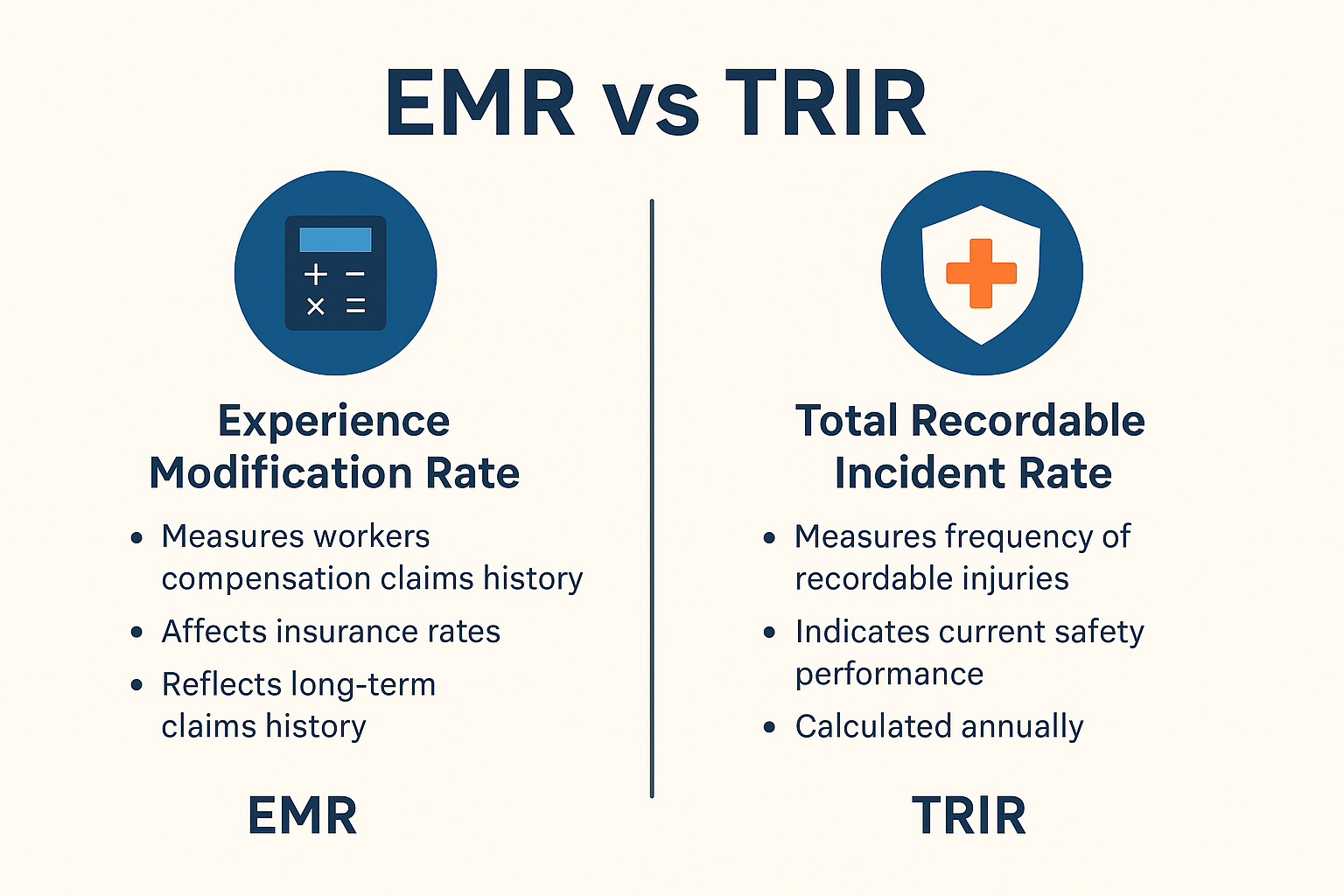OSHA inspections don’t come with a warning, and being unprepared can lead to serious penalties. Employers should stay ready at all times by keeping their records organized, training their employees, and maintaining a safe site.
To prepare, in short, assign a compliance officer, update your documentation, train your team, inspect your equipment, and run mock inspections. These steps reduce risk and help avoid citations.
In this article, you’ll learn how to prepare for an OSHA inspection and what to expect when the inspector arrives.
What Happens During an OSHA Inspection?
An OSHA inspection follows a specific sequence. The inspector starts by meeting with your team, then moves through the site to observe conditions, check records, and speak with employees.
Each part of the process gives the inspector a closer look at your safety practices and potential risks. Knowing what happens at each stage helps you stay prepared and respond with confidence.
Opening Conference
Every OSHA inspection begins with a meeting. The OSHA compliance officer explains the reason for the visit and outlines how the inspection will move forward.
A site manager, the compliance officer, and an employee representative should attend. If your organization is involved in the union, invite a union leader to participate.
Discuss the following:
- Purpose of inspection – Ask the officer to explain whether it stems from a schedule, a workplace injury, or an employee complaint.
- Assigned lead – Introduce your inspection coordinator, who will serve as the main point of contact.
- Required safety briefing – If your workplace has site-specific safety policies or rules, deliver a short training before entry.
- PPE requirements – Provide hearing protection, a respirator, or any other required gear.
- Expected duration – Ask how long the inspection may take, based on the size of your site and the inspection type.
- Daily check-ins – Request regular updates or a summary of concerns at the end of each day.
- Final review meeting – Confirm that you expect a closing conference at the end of the visit.
When the OSHA inspector shows up without advance notice, remain calm and follow this same structure. Organize the right people quickly and keep communication open.
Walkaround Inspection
The inspection continues with a full walkthrough of the workplace. The officer observes operations, checks for unsafe conditions, reviews documents, and may conduct employee interviews to gather more details. These interviews could take place privately or during the walk if needed.
Follow these steps during the walkaround:
- Stick to the reason – If the inspection began due to a complaint or injury, request that the officer focus on that specific area.
- Assign two staff – One person walks with the officer while the other takes notes and tracks all questions, including any witness statement given.
- Match the documentation – Take photos of anything the officer photographs and include wide-angle views for added context.
- Collect samples – If the officer gathers air or noise data, request duplicate samples or agree to split them.
- Fix issues fast – Correct any hazards right away, explain what changed, and move on.
The Occupational Safety and Health Administration encourages companies to identify hazards and take prompt action during inspections. Good records and clear communication go a long way.
Closing Conference
The final meeting wraps up the OSHA inspection. The officer shares what was observed and outlines the next steps. Use this time to ask questions, clarify any errors, and confirm what’s expected going forward.
Bring up these items:
- Violations or concerns – Ask if the officer noted any violations or safety risks.
- Return visit – Confirm whether a follow-up inspection will happen.
- Remaining interviews – Ask if any employee interviews are still pending.
- Document requests – Clarify what paperwork must still be submitted.
- Citation timing – Ask when to expect formal citations, if any.
- Unclear items – Review any situations your team corrected and submit updated information if needed.
If you disagree with any findings, you can request an informal conference with the area office to review the results. During this process, you may also provide supporting documents or clarification in the employee’s native language if necessary.
7 Steps to Prepare for an OSHA Inspection
Each of the seven steps below gives your team a direct way to stay ready and reduce the risk of costly citations.
1. Assign an OSHA Compliance Officer or Inspection Leader
Choose someone with strong knowledge of your safety policies and site operations. This person will lead the inspection process and serve as the main contact.
Their key responsibilities are:
- Meet the inspector when they arrive
- Walk with the inspector during the site review
- Answer questions and provide requested documents
- Coordinate follow-up tasks and communication
- Keep a backup ready to step in if needed
Inspectors may ask to see the credentials of whoever manages your safety program. Make sure the person in this role understands OSHA procedures and can explain site-specific risks.
2. Review and Update All Safety Documentation
Incomplete or outdated records raise concerns during an inspection. Go through every document related to safety and update what’s missing.
Review these items:
- OSHA 300, 300A, and 301 logs
- Safety meeting records
- Job hazards analysis reports
- Equipment inspection checklists
- Employee training records
- Worker compensation files and injury logs
- Written safety policies and emergency procedures
Keep all documentation up to date and easy to retrieve.
3. Conduct a Mock OSHA Inspection
Practice inspections reveal issues before they become citations. Use a checklist that mirrors the OSHA inspection process and document your findings.
During the walkthrough:
- Check for physical hazards like blocked exits or exposed wires
- Note missing signs, damaged PPE, or broken equipment
- Review first aid stations, fire extinguishers, and storage areas
- Talk to employees about their knowledge of procedures
- Assign corrective actions with clear deadlines
Mock inspections often uncover hazard assessments that need updates, and prepare your team to respond clearly and calmly during targeted inspections.
4. Offer Inspection Protocols and Occupational Safety Training Course for Employees
Employees should understand how inspections work and what they might be asked. A short training course keeps everyone aligned.
Cover these topics:
- What the Occupational Safety and Health Administration does
- Who speaks to the inspector
- How to answer questions honestly and clearly
- What to do if asked to give a witness statement
- What parts of the site the inspector may visit
- Why inspectors may conduct employee interviews
If an attorney is present, let the employee know their rights and what they should expect during any formal interview.
5. Inspect Equipment and Personal Protective Equipment
Unsafe or poorly maintained tools lead to fast citations. Schedule time to inspect all equipment used in day-to-day operations.
Here’s what to check:
- Guards and labels on machines
- Condition of ladders, forklifts, and carts
- Emergency equipment (eyewash, alarms, lighting)
- Fit and condition of PPE (gloves, hearing protection, respirators)
- Proper storage of chemicals and materials
If any hazards exist during this inspection, fix them immediately and update records to show action was taken.
6. Plan and Conduct a Pre-Inspection Walkthrough
This site walkthrough helps catch anything your team might’ve missed. It also gives the compliance officer a clear picture of your preparation.
Look for and correct:
- Cluttered walkways or blocked emergency exits
- Missing signs or unreadable labels
- Unsecured materials and unmarked hazards
- Expired safety tags or outdated instructions
- Housekeeping issues that increase risk
Some inspections begin due to worker complaints, while others result from imminent danger situations or severe injuries. A clean, hazard-free site can reduce these risks.
7. Review Emergency Plans and Procedures
Inspectors often ask how your site handles fires, chemical spills, or weather events. Everyone needs to know what to do and where to go.
Make sure your plan includes:
- Clear evacuation routes and maps
- Posted contact numbers for emergency responders
- Alarm systems and drill schedules
- Manager’s responsibilities during emergencies
- Procedures for equipment shutdowns
- Training on how to report problems quickly
Prepare for both internal reviews and third-party audits by testing your emergency response systems and making sure your documentation is complete.
Eliminate Surprises During the OSHA Inspection Process With EHS Momentum
Preparing for an OSHA inspection takes more than a binder of documents. MyMomentum gives your team real-time control over inspections, training, and compliance tasks.
How EHS Momentum’s MyMomentum helps your team stay ready:
- Centralized records – Keep OSHA logs, training records, hazard assessments, and safety guidelines in one place.
- Real-time alerts – Track overdue items, upcoming deadlines, and incomplete corrective actions automatically.
- Mobile access – Capture inspections, upload documents, and complete tasks from any phone or tablet.
- QR code reporting – Speed up inspections and site checks with scan-to-log tools.
- Unlimited users – Give every team member access without extra cost.
- Emergency readiness – Log drills, maintain up-to-date plans, and prepare for imminent danger situations.
Want to make OSHA inspections less stressful? Book a demo and see how EHS Momentum can help!
FAQs About How to Prepare for an OSHA Inspection
How do I prepare for an OSHA inspection?
Assign a compliance officer, keep records updated, train employees, inspect equipment, and walk around the facility to correct hazards. Use monitoring tools and clear safety guidance to stay inspection-ready. If trade secrets are involved, prepare to explain them and limit access appropriately.
What does OSHA look for during an inspection?
Inspectors check for physical hazards, training gaps, incomplete records, unsafe work practices, and whether the employer follows industry standards, labor laws, and posted safety guidelines.
Is the OSHA inspection usually unannounced?
Yes, most inspections are unannounced unless the agency needs someone specific on-site or must coordinate entry due to special conditions.
What is something you should not do during an OSHA inspection?
Don’t argue, block access, or mislead the inspector. If you want an attorney present, request it calmly. Never interfere with interviews or disrupt the inspection process.







